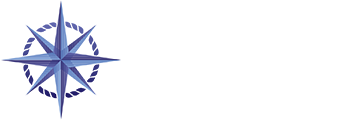Nyheter
Will the EU meet its own deadline to end overfishing?
Time is running out for the EU to prove that it can stop overfishing, a legal requirement of the 2013 reform of the bloc’s Common Fisheries Policy.
EU fisheries ministers set the 2019 catch quota for Eastern Baltic cod at 29,912 tonnes, ignoring warnings from international fisheries scientists to set the limit 80% lower due to dwindling numbers. Just nine months later, the European Commission issued an emergency ban on commercial fishing of the species after further research found its population on the brink of collapse.
The news “crystalises the failure” of member state governments to manage fish stocks sustainably according to Andrew Clayton, project director of the Pew Charitable Trusts’ campaign to end overfishing in Northwestern Europe.
“This is a really clear example of short-termism, of putting a stock under pressure—as a result, everyone loses,” he says.
High stakes
The stakes are higher than ever for next year’s fishing quota. When the EU’s Common Fisheries Policy (CFP) was reformed in 2013, it included a law to force member states to eliminate overfishing. Sustainable exploitation rates of fish stocks were to be ensured “by 2015, where possible, and on a progressive, incremental basis at the latest by 2020 for all stocks”.
Since the law came into effect in 2014 the proportion of quotas set in excess of scientific advice has fallen, according to the Pew Charitable Trusts, but progress is too slow to meet the January 1st 2020 deadline (see figure).

The level of fishing allowed in EU waters is set annually for different stocks. Scientists on the International Council for the Exploration of the Sea (ICES) provide the commission with suggested quantities for each species. In turn, the commission publishes its proposals for Total Allowable Catch limits (TACs). Following negotiations, the final decision is made by member state ministers sitting on the Agriculture and Fisheries (AGRIFISH) Council, under the Council of the EU.
Next year’s quotas for the Baltic Sea were set in October. This provides insight into ministerial attitudes ahead of the bigger decision on North East Atlantic fish stocks in December. While TACs for five species were set in line with scientific advice, another five were not.
Campaigners have slammed ministers for maintaining overfishing beyond the 2020 deadline. However Mr Clayton acknowledges that they did make some tough decisions, including the agreement of huge cuts in catches for Western herrings and Eastern Baltic cod.
This was controversial within the fishing industry. Daniel Voces, managing director of Europêche (the representative body for fishermen in the EU) describes the move as “a complete shock” which would cause “serious economic and irreversible damage” to both fishing fleets and the infrastructure serving them.
He argues that alongside the overfishing deadline, it is the responsibility of the CFP to ensure that fisheries management achieves economic, social and employment benefits, and contributes to food supplies. Mr Voces asserts that environmental factors such as climate change and pollution do more damage to fish stocks than fishing itself.
But Mr Clayton counters: “the reason [ministers] had to make such large cuts is because they’ve failed to manage the stocks properly in previous years.” He adds that there has “been ample opportunity to take gradual steps to do this in a way that kept fisheries operating. But ministers have not done that, which is why we’re facing steep cuts in the final year”.
The commission’s North Atlantic proposal for 2020 suggests reducing the fishing quota for 40 fish species while increasing it or keeping it the same for 32 stocks. However, several campaign groups argue that even though quotas for some fish have been reduced, they still exceed levels advised by scientists. For example, the quota for sole is 40% lower than last year, but still 28% above advice provided by ICES.
Lack of transparency
The whole process of setting quotas suffers from a lack of transparency. Though the advice of ICES and the commission’s original proposals are publicly available, documents relating to member states’ negotiating positions and meetings to discuss them are not.
Ministers and officials have failed to explain the justification for TACs being set higher than scientific advice, Mr Clayton says. “We want to see the rationale for setting higher limits rather than vague economic statements that are inherently short-termist. There’s no evidence that overfishing is good for anyone in the medium term.”
The European Ombudsman has requested that the Council of the EU releases more information on its negotiations. The formal recommendation in late October followed an official complaint lodged by environmental law campaigners ClientEarth earlier this year.
Although the ombudsman’s advice is not legally binding, the Finnish presidency of the EU is looking into ways to make the negotiations more transparent, according to ClientEarth lawyer Nick Goetschalckx.
Legal action
Environmental lawyers also believe there could be grounds for legal action if the AGRIFISH council’s upcoming decision on North Atlantic stocks are out of step with scientific advice. This would necessarily contravene the CFP’s legally binding 2020 deadline to end overfishing. To bypass this issue, the TACs could be annulled by the European Court of Justice, Mr Goetschalckx explains.
“When all these commitments are made on the climate and environmental crisis, it is very important at some point to put your foot down to show that there are legal implications if they’re not upheld,” he says.
Mr Clayton argues that it makes even more sense to lower the stress caused by fishing, considering all the far more complex threats to the ocean. “We’re not going to fix climate change during the course of 2020, but we could set the levels of fishing lower. It’s the one thing that’s in our control,” he says.
The Economist Group cannot accept any responsibility or liability for reliance by any person on this article or any of the information, opinions or conclusions set out in the article.
Källa: The Economist Group



